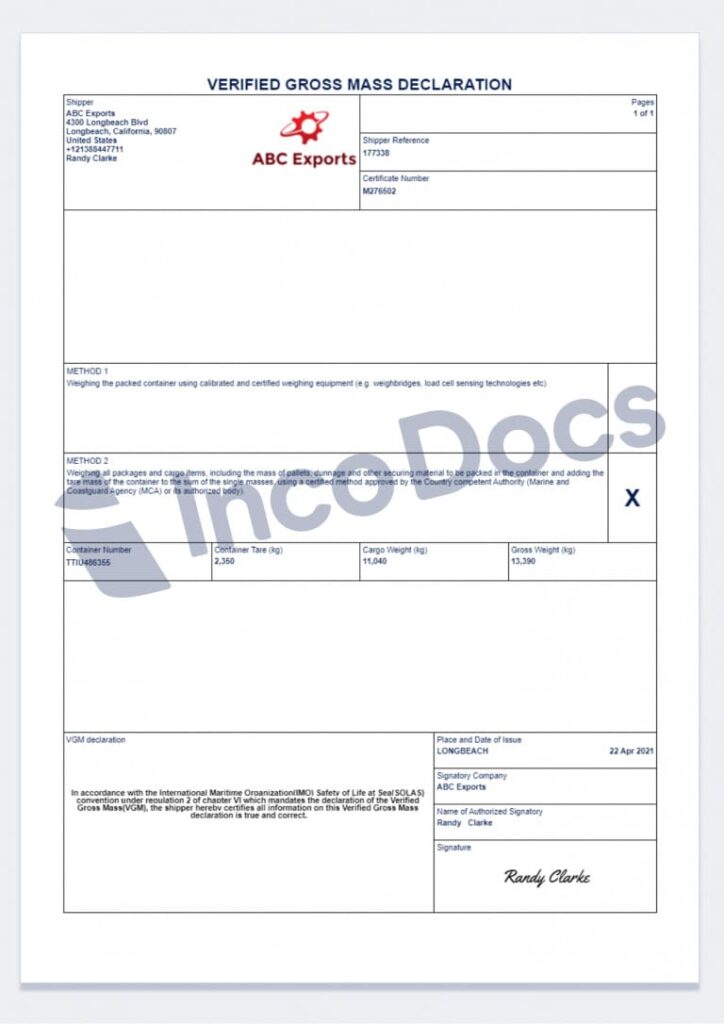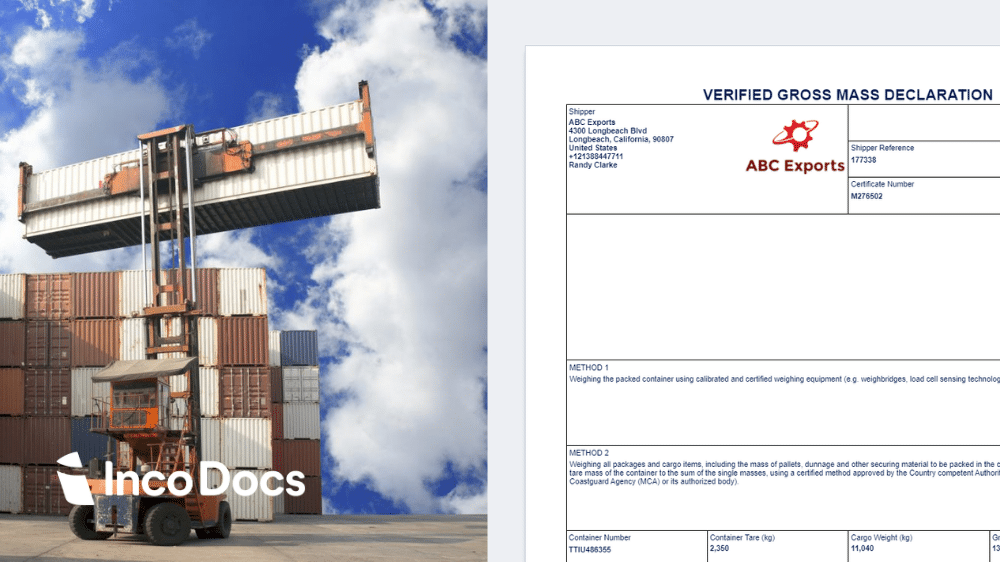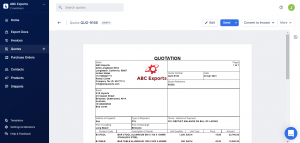Updated Verified Gross Mass regulations enforce strict procedures for shippers
The SOLAS VGM (Verified Gross Mass) is a strict global regulation enforced by the International Maritime Organization (IMO). The SOLAS (Safety of Life at Sea) regulations were updated to ensure that shippers correctly declare the total verified gross mass of shipping containers ready for export.
These new regulations place responsibility on the shipper to ensure that the gross mass of loaded shipping containers is correctly weighed and verified within important safe weight limitations. The verified weight is essential for the stowage plan to ensure containers are safely loaded onto a vessel.
Why were SOLAS regulations updated?
In the past, shippers have misdeclared the gross mass of containerized cargo, leading to catastrophic consequences. Overloaded shipping containers have caused accidents involving trucks, trains, and vessels along the supply chain. Massive damage and loss of life have been directly related to misdeclared container weight. The updates to the SOLAS regulations came into effect on 1st July 2016.
How can shippers accurately weigh loaded containers to comply with SOLAS VGM?
The gross mass of loaded shipping containers must be recorded and verified before they can be loaded onboard a vessel for export. Every container that is being shipped must individually be weighed and verified. There are 2 approved methods that must be used to declare the verified gross mass:
Method 1 – The packed container is weighed by an accredited weigh bridge
The packed container is weighed by an accredited weighbridge. Shippers can request the freight forwarder or shipping agent to send the loaded container by truck to an accredited weighbridge. These weighbridges are usually situated close to ports. Trucks are weighed before moving the containers directly to the terminal. If the container’s gross mass is within regulations, the data is submitted to the carrier. The truck then delivers the container to the port. The cost of this process is charged to the shipper. The forwarder or agent can provide the Verified Gross Mass Certificate.
Method 2 – The shipper calculates and declares the total Verified Gross Mass
The shipper calculates and declares the total verified gross mass. To do this, the shipper must accurately record the weight of the cargo, dunnage, and packaging materials packed in the container. The cargo weight, dunnage, packaging materials, and container tare weight are added together to get the total verified gross mass.
Cargo Gross Weight + Container Tare Weight = Verified Gross Mass
The shipper must then provide a Verified Gross Mass Declaration. This document declares the verified gross mass.
How to create and download a Verified Gross Mass Declaration VGM Document
Shippers must provide a VGM document before the containerized goods can be received at the port of export or loaded onto a ship. As mentioned, there are two methods to declare the Verified Gross Mass.
If you have the facilities to weigh the cargo items or know the mass of the goods you are loading into your containers, you can use Method 2. When Method 1 is used, freight forwarders or agents may charge costs of $50-$100 USD to provide the VGM. So, if you understand the weight of the cargo, you can create your own Verified Gross Mass declaration.
Watch how shippers use IncoDocs to create compliant Verified Gross Mass Documents at no cost.
What information is required on the Verified Gross Mass Declaration document?
A Verified Gross Mass document template must include the below details:
- Shipper’s (exporter’s) company name, address and contact details
- Shipper’s reference number
- The Method used to verify the gross mass (Method 1 or Method 2)
- The verified gross mass (kg)
- Container Number
- Vessel Name and voyage
- Place and date of issue
- Signatory company name
- Name, date and signature of authorized company representative

Frequently Asked Questions on VGM
Who enforces SOLAS VGM?
The International Maritime Organization (IMO) enforces SOLAS VGM regulations. These regulations require shippers to verify the gross mass of the container before loading it onto a vessel. Compliance ensures the safety of the ship and all involved in the shipping process. The shipping company must check the VGM certificate and ensure that the weight of the container, including the tare mass and the loaded cargo items, is accurately documented.
What happens if I don’t have a SOLAS VGM?
Without a SOLAS VGM, your container will not be loaded onto the ship. The terminal requires the VGM certificate to comply with the VGM regulations. Failing to provide the verified gross mass declaration means the container cannot be included in the stowage plan. This can lead to delays and additional costs as the shipping company will reject the container.
What if my container is overloaded?
If your container is overloaded, it will be rejected. Overloaded containers pose a significant risk to safety. The tare weight of the container and the weight of the cargo must be within specified limits. An overloaded container can cause accidents and damage during transport. The shipper must ensure that the mass of the container complies with the VGM requirements before submitting it for shipment.
Who is responsible for VGM?
The shipper is responsible for providing the VGM. They must weigh all packages and cargo items, including the container’s tare weight, to calculate the total mass. This includes using Method 1 or Method 2 to verify the gross mass. Once the weight verification is complete, the shipper must document the verified gross mass and submit the VGM declaration to the shipping company.







